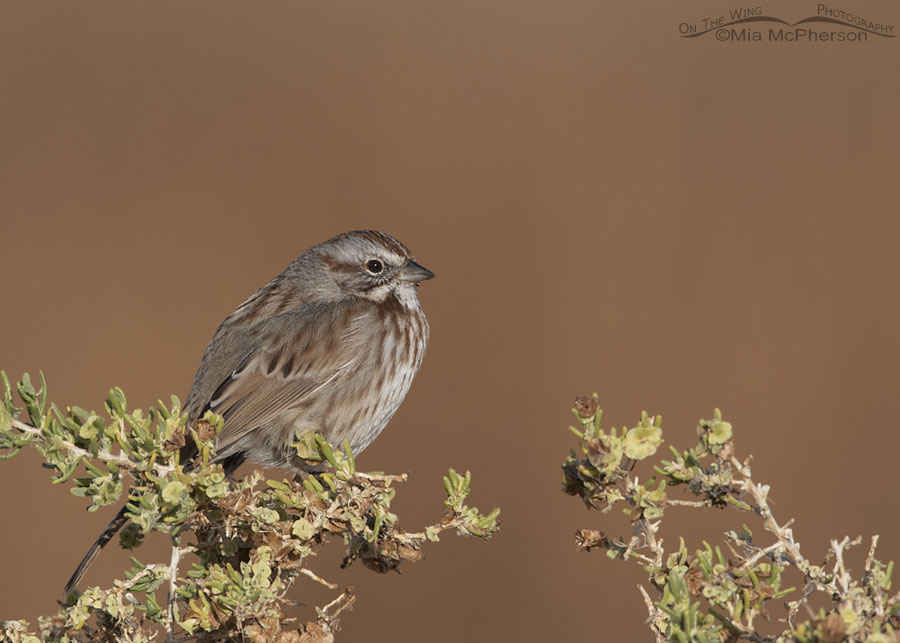 Autumn Song Sparrow perched on a greasewood – Nikon D500, f7.1, 1/1250, ISO 640, Nikkor 500mm VR with 1.4x TC, natural light
Autumn Song Sparrow perched on a greasewood – Nikon D500, f7.1, 1/1250, ISO 640, Nikkor 500mm VR with 1.4x TC, natural light
Early in November, on the day that I found my first White-throated Sparrow in Utah, I photographed other birds that I haven’t yet shared here. Today I wanted to share one photo of a Song Sparrow perched on a greasewood in the beautiful light of a cool autumn morning. This Song Sparrow didn’t sing while it was in my viewfinder but as I recall it was its song that clued me in on where the sparrow was. I love listening to this species sing. It is easy to smile when I hear their songs.
Both the common and scientific name for these sparrows suit them well because they both indicate that this species sings and they do sing a lot. The scientific name is Melospiza melodia and the melodia part is for melody. These sparrows are songsters that may have a repertoire with as many as twenty tunes and many variations of those tunes.
Song Sparrows are a well known, wide spread species with 24 diagnosable subspecies in North America.¹ During the spring, summer, and fall in northern Utah I see this species in a variety of habitats including high in the mountains along streams and creeks, marshes and wetlands in the valleys, and desert scrub and sagebrush habitats. I don’t recall ever seeing a Song Sparrow in my garden in Virginia but that may have been because at the time my garden was surrounded by a thick forest.
Song Sparrows are often confused with some of the other members of the sparrow family but by paying attention to field marks, behavior, and song I find them relatively easy to identify. Still, I hear the “Is it a Song Sparrow?” question quite often when I am in field.
I appreciate and enjoy every encounter I have with Song Sparrows no matter what time of the year it is or what kind of habitat I find them in.
Life is good.
Mia
Click here to see more of my Song Sparrow photos plus facts and information about this species.


Beautiful pic! I love how the background color melds so perfectly with the Sparrow. Thanks Mia.
Sweet photo of this beautiful little songster. They certainly do vary in song and plumage. I have seen some very pale ones as well as quite rust-red. Their songs can sometimes be confusing.
Nice image with the milk-chocolate background and I enjoyed the links you provided. Sad to hear of birds disappearing however.
The bokeh and the pop of green from the greasewood really set off this little charmer. I’m so glad that you give these oft-ignored LBJs their due.
Beautiful.
Yesterday morning I saw (for the first time in years) one of our house sparrows. It was wonderful to see, they used to be everywhere and then they disappeared…